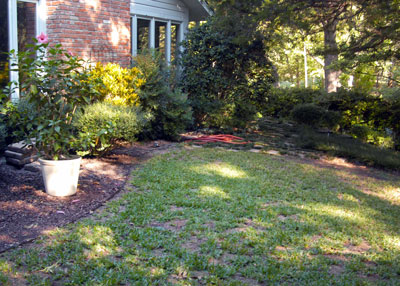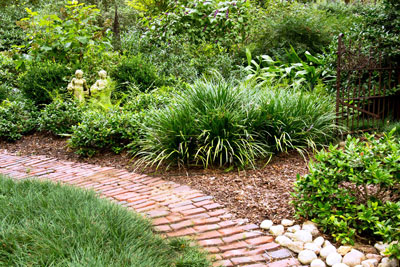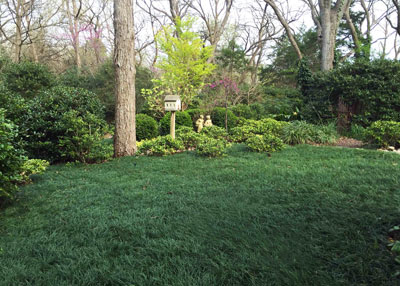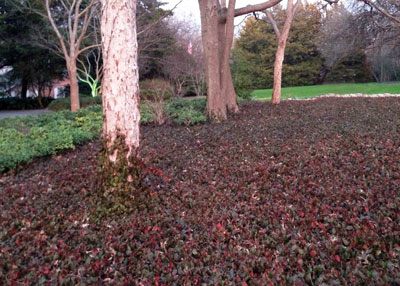When Grass Won’t Grow in the Shade

Photo: For 35 years St. Augustine was the turfgrass of choice in the Sperry landscape. But it began to fail as the pecan trees grew larger and larger.
Hardly a day goes by without someone asking me for a recommendation of a great grass to grow in the shade.
Or they tell me they had a fine-looking lawn at one time, but that now it’s mostly bare ground and weeds. I ask if they have trees, and they say, “Oh, yes. But they’re not the reason.”
That’s when I know it’s going to be a lengthy discussion. They continue, “But the grass was beautiful there just a year or two ago, and now just look at it….”
I remind them that the trees have grown a lot larger in those couple of years.
They continue, “Yes, but I had the tree thinned so more light could get through it….”
That’s when I usually shut down the dialog, worn out from all the “but-but-but” comebacks. Here’s what I try to explain.
• St. Augustine is our most shade-tolerant turfgrass. However, even it requires 4 or 5 hours of sunlight to thrive in South Texas landscapes and 5 or 6 hours in North Texas.
• The farther north you go in Texas, the harder our winter cold is on St. Augustine, so the more difficult it is for it to rev up and start growing in spring.
• If you try to plant new St. Augustine sod in a shaded location, that adds another element of challenge to it – suddenly it has to cope with all that shade and getting a fresh start on growing, but it also has lost most of its root system in the process of being dug.
Where all this leads…
If you have a heavily shaded area of your yard, and if grass has failed you repeatedly there, don’t expect some miracle cure (see below) to that situation.
1. If you’ve tried St. Augustine (or fescue in the Panhandle) and if it has failed;
2. And if you’ve already removed all the branches and unwanted trees that you care to;
3. Then it’s time to turn to a shade-tolerant groundcover that can take the place of the turfgrass.
4. Your best choices of groundcovers to grow in the shade include regular mondograss (monkeygrass), liriope, English ivy, purple wintercreeper euonymus, Asian jasmine, ferns and, in South Texas, Algerian ivy and ardisia. Ajuga is handsome, but limit your plantings due to its susceptibility to disease.
What about those “miracle” cures?
It amazes me how many seemingly unbelievable products and grasses come into the market every spring, each of them claiming to activate microbes so that grass will grow in the shade or assuring us that finally there’s a new solution to the old problem – at last, a grass that will grow in the shade. Well, usually hooey!
Here is my acid test for these claims:
Are they accompanied with bona fide research from a Land Grant university (meaning, a state agricultural college)? I’ve yet to see one that was.

Ajuga and English ivy.

Liriope clumps, mondograss (foreground) and woodferns.

Mondograss in the Sperry backyard.

Purple wintercreeper showing its winter color.

Variegated Algerian Ivy.
